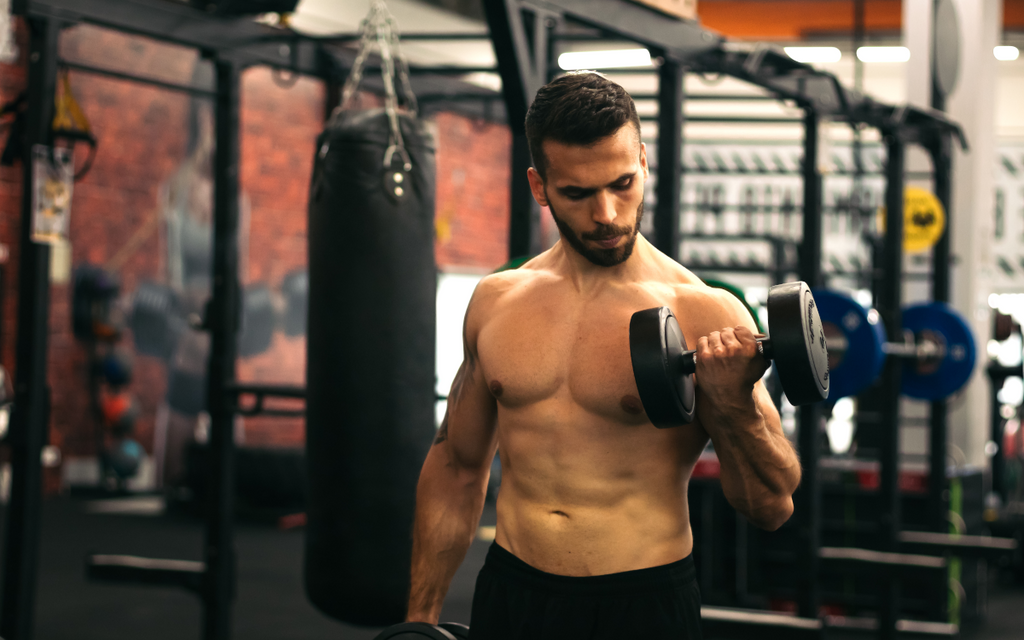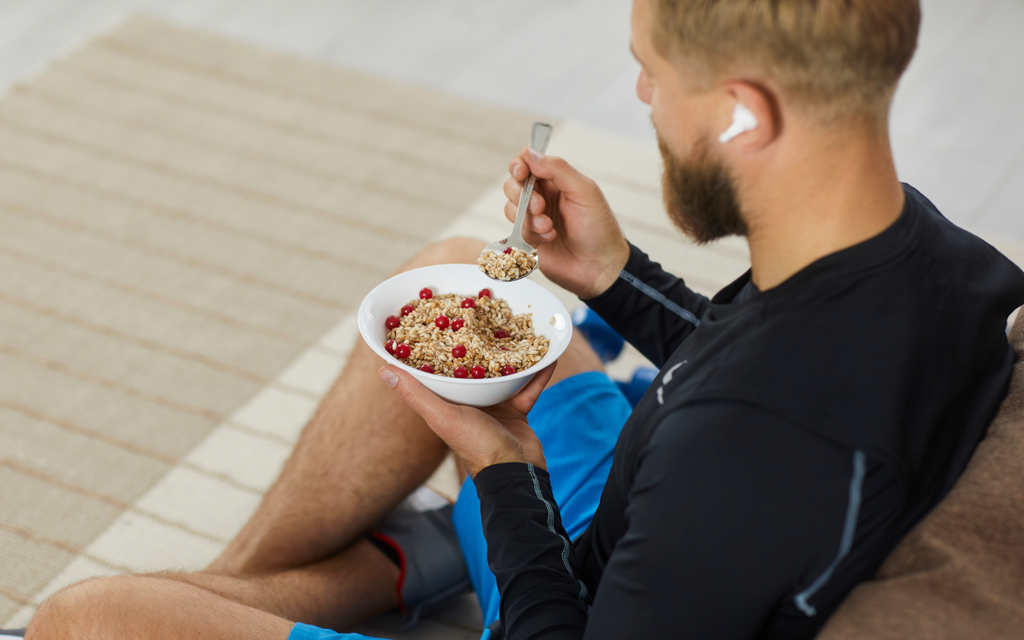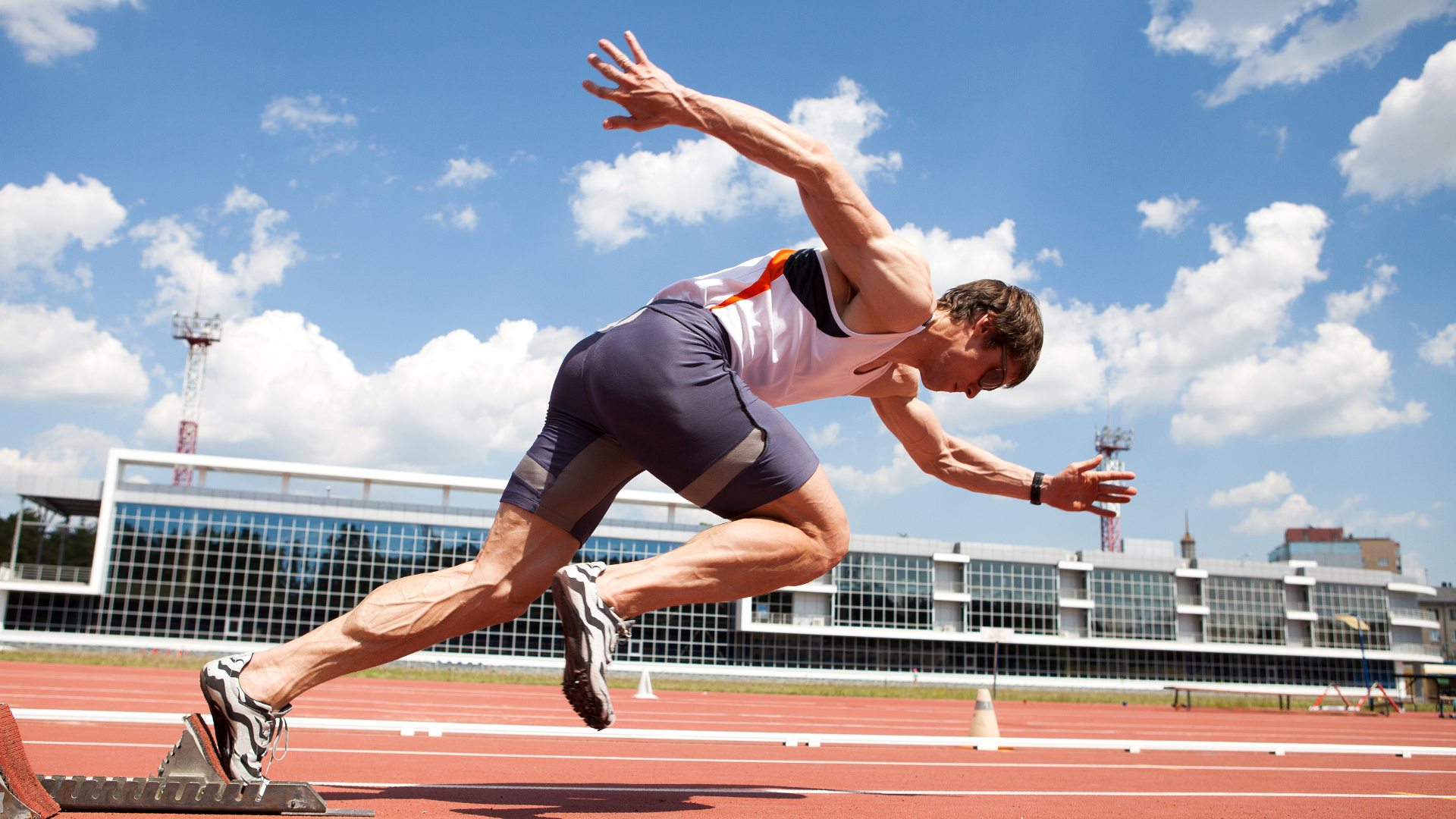Are you curious about the body-boosting power of intermittent fasting and exercise? If so, you're not alone.
The combination of these two popular fitness tactics has gained a lot of attention lately. But does it actually get results? Here, we'll dive into the science behind intermittent fasting and explore how it affects your exercise performance.
So if you're looking to maximize the benefits of intermittent fasting through exercise, keep reading.
What is intermittent fasting?
Intermittent fasting (IF) is an eating pattern that cycles between periods of fasting and eating. Although it doesn't specify which foods you should eat, this wildly popular dietary pattern recommends when to eat.
IF has gained popularity for its potential health benefits, including weight loss, improved metabolic health, and longevity.
The main idea behind intermittent fasting is to extend the period of time between meals, allowing your body to enter a ‘fasted state’.
During a fasted state, your body starts burning stored fat for energy. This can lead to weight loss and other health benefits, like improved insulin sensitivity and reduced inflammation.
What are the different types of intermittent fasting?
Intermittent fasting is promoted through various fasting methods, each with its own unique approach to cycling between periods of eating and fasting. Let's get into the most popular types of intermittent fasting:
16/8 method
Also known as the “Leangains protocol”, this method involves fasting for 16 hours each day and limiting your eating window to eight hours. For example, you might eat between 12 pm and 8 pm and fast for the remaining 16 hours, including sleep time.
5:2 diet
In this approach, you eat normally five days a week and restrict calorie intake to about 500 to 600 calories on two non-consecutive days. On fasting days, men typically consume 600 calories, while women consume 500 calories.
Eat-Stop-Eat
With this method, you fast for a full 24 hours once or twice a week. For example, you might fast from dinner one day until dinner the next day.
Alternate-day fasting
As the name suggests, this method involves alternating between fasting days and non-fasting days.
On fasting days, you may consume very few calories or none at all, while on non-fasting days, you eat freely.
Warrior Diet
This approach involves fasting for 20 hours each day and consuming all of your calories within a 4-hour eating window, typically in the evening.
OMAD (One Meal a Day)
As the name implies, this method involves eating only one meal per day, typically within a one-hour window, and fasting for the remaining 23 hours.
24-hour fasts
With this method, you fast for a full 24 hours, either once or twice a week, without any calorie consumption during the fasting period.
Extended fasting
This involves fasting for longer periods, typically ranging from 48 hours to several days. Extended fasts should be approached with caution and may require medical supervision.
Note: It's important to talk to a healthcare professional before starting any fasting regimen, especially if you have underlying health conditions or concerns.
Benefits of working out while intermittent fasting

Working out while intermittent fasting can offer several body-boosting benefits.
Let’s take a look.
Enhanced fat burning
When you exercise in a fasted state, your body may rely more on fat stores for fuel since glycogen levels are lower. This can increase fat-burning during your workouts.
Improved insulin sensitivity
Intermittent fasting has been shown to improve insulin sensitivity, and combining it with exercise may further boost this effect. Improved insulin sensitivity can help with blood sugar regulation and reduce the risk of type 2 diabetes.
Increased growth hormone production
Fasting can trigger an increase in growth hormone levels, which plays a role in fat metabolism, muscle growth, and repair.
This can empower you to maintain muscle, grow muscle and recover quicker when combined with exercise.
Preservation of muscle mass
Contrary to concerns, working out while fasting doesn't necessarily lead to muscle loss. In fact, combining exercise with intermittent fasting may help preserve muscle mass by promoting protein synthesis and reducing muscle breakdown.
Better body composition
Combining intermittent fasting with exercise can lead to greater improvements in body composition, including reductions in body fat percentage and increases in lean muscle mass.
So, by getting your fasting and pumping efforts just right, you’ll enjoy some seriously impressive mirror muscles.
Increased mental clarity and focus
Many people report feeling mentally sharp and focused during fasted workouts. This may be due to increased adrenaline levels and enhanced brain function in the absence of food intake.
Simplified meal timing
Working out while intermittent fasting can simplify meal planning, as you may only need to schedule your workouts and meals within a specific eating window.
Remember: If you’ve started fasting and don’t feel it’s working well for you, listen to your body and work out a regimen that may suit you better with a healthcare professional.
What time should you work out while fasting?

The best time to work out while fasting depends on your personal schedule, preferences, and how your body responds to exercise in a fasted state.
Here are some considerations to help you decide the best times for you to get your pump on.
Morning workouts
Some people find it beneficial to exercise in the morning while fasting, as it can help kick-start their metabolism, increase energy levels, and set a positive tone for the day.
Morning workouts can also be convenient for individuals with busy schedules, as they can get their exercise done before other daily responsibilities.
Midday workouts
Exercising during the midday hours, typically before breaking the fast, can be another option for those who prefer to work out later in the morning or early afternoon.
This timing allows people to fuel their workouts with a meal or snack shortly afterwards, providing energy for recovery and replenishing glycogen stores.
Evening workouts
While less common for fasted workouts, some individuals may prefer exercising in the evening, closer to their eating window.
Evening workouts can be suitable for those who have more energy later in the day or prefer to unwind with exercise after work.
Listen to Your Body
Regardless of the time of day, it's essential to listen to your body and pay attention to how you feel during and after exercise while fasting.
Some people may feel more energized and perform better during fasted workouts, while others may experience fatigue or decreased performance. Experiment with different workout times to see what works best for you.
Consider Workout Intensity
The intensity and duration of your workouts may also influence the best timing for fasted exercise. Low to moderate-intensity activities such as walking, yoga, or light resistance training may be more sustainable in a fasted state compared to high-intensity exercises like HIIT or heavy lifting.
Hydration
Workout time aside, staying hydrated is essential. Drink plenty of water before, during, and after your workouts to maintain hydration levels and support performance.
Read: Morning Workout vs. Evening Workout: Which is Best?
What should I eat while intermittent fasting and working out?

While intermittent fasting and working out, it's crucial to eat nutrient-dense foods that provide energy, support muscle repair, and aid in recovery.
Here are some big-hitting nutrients you should add to your diet…
Prioritize protein: Include protein-rich foods in each meal to support muscle maintenance and recovery, like chicken, turkey, fish, eggs, tofu, tempeh, legumes, and dairy products.
Include healthy fats: Healthy fats such as avocados, nuts, seeds, olive oil, and fatty fish, provide sustained energy and help keep you feeling full and satisfied during fasting periods.
Choose complex carbohydrates: Go for complex carbohydrates that provide sustained energy without causing rapid blood sugar spikes, such as brown rice, quinoa, oats, and barley, sweet potatoes, squash, and legumes.
Eat plenty of fruits and vegetables and drink water: Fruits and vegetables are rich in vitamins, minerals, antioxidants, and fiber, which are essential for overall health and well-being. Aim to include a variety of colorful fruits and vegetables (eat the rainbow!) in your meals to ensure you're getting a wide range of nutrients.
Timing of meals: If possible, try to time your meals around your workouts. Eating a balanced meal containing carbohydrates and protein within the eating window following your workout can help replenish glycogen stores and support muscle recovery.
Pre-workout fuel: If you find that you need some energy before your workout, consider consuming a small snack containing carbohydrates and protein, like a banana with nut butter or a Greek yogurt parfait with fruit and granola, within an hour or two before exercising.
Post-workout nutrition: After your workout, aim to eat a nutrient-packed meal or snack containing protein and carbohydrates within the eating window to support muscle repair and recovery.
Examples include a chicken and vegetable stir-fry with brown rice, a smoothie made with protein powder, fruits, and spinach, or a turkey sandwich on whole grain bread with avocado and vegetables.
If you need extra protein and a calorie boost, consider taking a post-workout protein shake.
Reminder: Including resistance training exercises in your workout routine to build and preserve lean muscle mass.
What are the side effects of intermittent fasting and working out?

Intermittent fasting and working out can offer a treasure trove of health benefits, but it's essential to be aware of potential side effects, especially when combining the two.
Here are some common potential side effects…
Fatigue and weakness
- Intermittent fasting, particularly in combination with intense exercise, may lead to feelings of fatigue and weakness, especially during fasting periods.
Dizziness and lightheadedness
- Fasting can sometimes cause fluctuations in blood sugar levels, which may result in dizziness or lightheadedness.
Muscle loss
- Exercising in a fasted state may increase the risk of muscle breakdown, especially if you don’t get your fill of protein and recovery properly.
- To fight this risk, prioritize protein-rich foods and consider consuming a protein-rich meal or snack after workouts.
Poor performance
- Some people experience decreased exercise performance while intermittent fasting, particularly during high-intensity or prolonged workouts. Adjusting workout intensity or timing may help this effect.
Increased hunger and cravings
- Intermittent fasting may lead to increased hunger and cravings, especially during fasting periods or after workouts.
- It's essential to listen to your body's hunger signals and consume balanced meals to satisfy your nutritional needs.
Disordered eating patterns
- Intermittent fasting can trigger or exacerbate disordered eating patterns in susceptible individuals, leading to unhealthy relationships with food and potential long-term consequences.
Electrolyte imbalance
- Prolonged fasting or intense exercise without adequate hydration can lead to electrolyte imbalances, which can encourage symptoms like muscle cramps, headaches, low blood sugar, low blood pressure or fatigue.
- So, hydrate properly and consider replenishing electrolytes through electrolyte-rich foods or drinks.
Sleep disturbance
- Some people experience disruptions in sleep patterns, such as difficulty falling asleep or staying asleep, while intermittent fasting and working out.
- This could be due to changes in hormone levels or a lack of energy. Establishing a consistent sleep schedule and practicing relaxation techniques may help improve sleep quality.
Tip: Working out on an empty stomach could help you lose weight as your body will rely on stored fuel. Talk to a healthcare professional before starting a new regimen.
So, does intermittent fasting with exercise really work?
Yes, working out while intermittent fasting can help you lose weight and boost your overall fitness levels.
By knowing the potential effects of intermittent fasting on your energy levels, muscle recovery, and exercise performance—you can take your workout routine to the next level while getting shredded.
But while intermittent fasting combined with exercise has shown promising results for many, it's important to remember that everyone's body is unique. What works for one person may not work for another.
If you're considering adding intermittent fasting to your workout routine, it's always best to talk to a healthcare professional.
So, if you're ready to take your intermittent fasting journey to the next level and supercharge your exercise routine, try it—you might be pleasantly surprised by the results!
Level up your gains with Crazy Nutrition

If you’re looking to increase your energy and protein intake, look at our top-flight whey protein powder.
Giving you the energy you need for your workouts, especially if you’re following a fasting regime, our epic Tri-Protein formula can work wonders.
Made from a balanced blend of high-quality proteins (including whey isolate) and packing 25.3 grams of protein per scoop, this can make all the difference to your intermittent fasting journey! Go get some.



